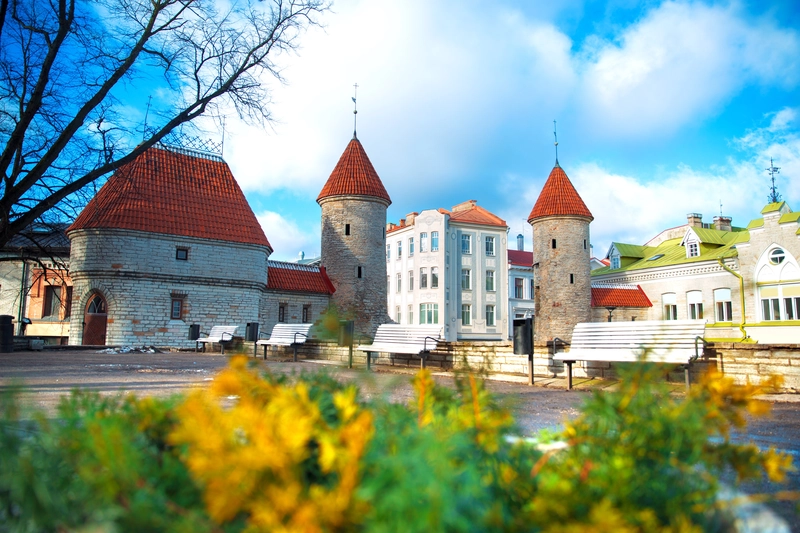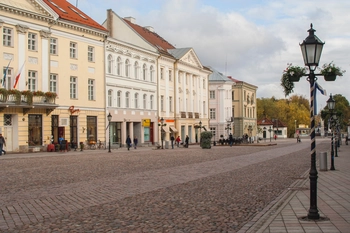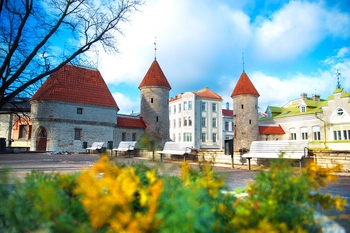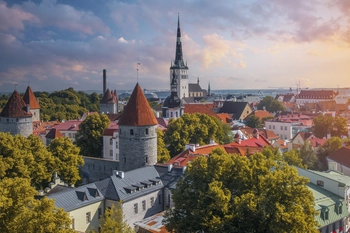The capital of Estonia is Tallinn. Tallinn is known for being largest city of Estonia and has a population of around 450,000 people. Situated on the coast of the Gulf of Finland Tallinn possesses a rich and fascinating history that can be observed in its stunning architecture.
Europe
Estonia: The Land of Medieval Castles and Historic Old Towns
This page contains affiliate links. This means that I get a commission if you purchase through my links, at no cost to you.

Estonia, located in Northern Europe, is a small country with a population of approximately 1.3 million. It is renowned for its stunning natural landscapes, advanced technology, and vibrant cultural heritage.
Tallinn, the capital of Estonia, holds the prestigious title of a UNESCO World Heritage Site. It captivates visitors with its enchanting medieval architecture, quaint cobbled streets, and thriving cultural scene. The country's lush forests, picturesque lakes, and awe-inspiring coastlines also serve as major attractions for tourists from around the globe.
In recent years, Estonia has emerged as one of the world's most technologically progressive nations. Innovation and digital services are given significant emphasis here. Estonia was among the pioneers in implementing e-government services that enable citizens to access various public services online – from voting to tax payment.
Moreover, Estonia takes pride in its deep-rooted appreciation for traditional music, dance, and cuisine. The local gastronomy reflects influences from Baltic, Scandinavian, and Russian cultures – featuring hearty soups, stews, and meat dishes alongside an array of dairy products like cheese and sour cream.
In summary, Estonia stands out as a distinctively captivating country that blends rich history with breathtaking natural beauty and cutting-edge technological advancements. Estonia is a destination worth exploring, whether you're interested in discovering medieval architecture, trying out local cuisine, or immersing yourself in the latest technological advancements.
Frequently Asked Questions about Estonia
- What is the capital of Estonia?
- What currency does Estonia use?
Estonia uses the Euro (€) as its official currency.
- Are credit cards accepted in Estonia?
Yes, credit cards are widely accepted in Estonia, especially in urban areas and popular tourist destinations. Visa and MasterCard are the most commonly used credit cards.
- What is the best time to travel to Estonia?
The best time to travel to Estonia is during the summer months, from late May to early September. This is when the weather is relatively mild and the days are longer, allowing you to enjoy outdoor activities and explore the country's natural beauty. The winters can be quite cold, but they also offer a unique experience if you're interested in winter sports and festive celebrations.
- What is the population of Estonia?
The population of Estonia is around 1.3 million people.
- What language do they speak in Estonia?
The official language of Estonia is Estonian. It is a Finno-Ugric language and is unrelated to most other European languages. English is also widely spoken, especially in urban areas and among younger generations.
- Do I need a visa for Estonia?
Visa requirements can vary based on your nationality and the purpose of your visit. Citizens of many countries within the European Union (EU) and the Schengen Area do not need a visa for short stays (up to 90 days) in Estonia. However, it's essential to check the latest visa requirements and regulations based on your specific situation before you travel.
- Is Estonia a safe country?
Estonia is generally considered a safe country to visit. Crime rates are relatively low, and the country has a stable political and social environment. However, like in any destination, it's recommended to exercise basic precautions, such as safeguarding your belongings and being aware of your surroundings, especially in crowded or tourist areas.
Holidays in Estonia
| Date | Name |
|---|---|
| Jan. 1, 2025 | New Year's Day |
| Feb. 24, 2025 | Independence Day |
| April 18, 2025 | Good Friday |
| April 20, 2025 | Easter Sunday |
| May 1, 2025 | Spring Day |
| June 8, 2025 | Pentecost |
| June 23, 2025 | Victory Day |
| June 24, 2025 | Midsummer Day |
| Aug. 20, 2025 | Day of Restoration of Independence |
| Dec. 24, 2025 | Christmas Eve |
| Dec. 25, 2025 | Christmas Day |
| Dec. 26, 2025 | St. Stephen's Day |








